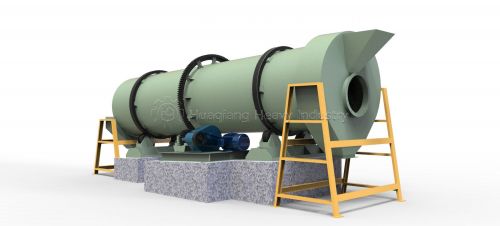In fertilizer production lines, coating machines are far from being optional accessories. Rather, they are core devices that improve product quality and expand application scenarios. Their functionality is irreplaceable in modern fertilizer production.

From the perspective of optimizing fertilizer performance, coating machines play a crucial role in precisely controlling nutrient release. By evenly spraying coating materials such as sulfur and resin onto the surface of granular fertilizer, a film with controlled air permeability is formed, allowing nutrients such as nitrogen, phosphorus, and potassium to be slowly released according to the crop's growth cycle. This slow-release effect avoids the risk of seedling burn associated with traditional fertilizers, reduces fertilization frequency, and is particularly suitable for crops with long growing periods, such as fruit trees and flowers. Without the film coating process, fertilizers are prone to rapid dissolution, leading to nutrient loss. This not only reduces utilization efficiency but can also cause environmental problems such as soil acidification.
In the competitive landscape of product differentiation, film coating machines are key to creating high-value-added fertilizers. In the current market, slow-release and functional fertilizers command significant price premiums, and the production of these products relies on the film coating process. For example, coated fertilizers with added humic acid can improve soil quality, while those with added trace elements can specifically address crop nutrient deficiencies. Production lines without coating machines can only produce standard granular fertilizers, failing to meet the demands of the high-end crop market and putting them at a price disadvantage in competitive pricing.
From a production economics perspective, investing in coating machines can yield long-term benefits. While the addition of coating increases the production cost per ton of fertilizer, it can increase the selling price by over 20% and enhance market acceptance. Furthermore, coated fertilizer granules become harder, reducing breakage during transportation by over 50%, thus reducing waste costs. For large-scale production lines, the benefits of this "quality improvement and loss reduction" far outweigh the equipment investment.
It can be seen that coating machines have become standard equipment in modern fertilizer production lines. Their functions are deeply integrated into product value and market competitiveness, and they are by no means an optional choice.